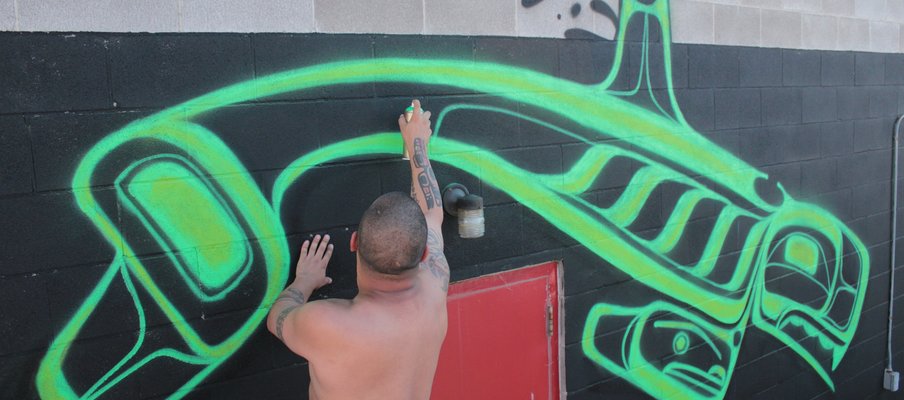
Saskatoon’s Street Meet Festival: challenging perceptions of public art
For many, the term “graffiti” conjures up a variety of negative stereotypes, but Saskatoon resident Keeley Haftner is working hard to change that perception.
This past summer, from July 5-7, 2013, Haftner collaborated with Saskatoon’s AKA Gallery and a group of renowned artists to create Saskatoon’s first annual street meet Festival. The Festival, held in the Riversdale area of the city, focused on street, public and graffiti art, and highlighted the work of four Canadian artists: Robyn love, a yarn bomber and performance artist from Newfoundland; Shelley Miller, an icing muralist from Montreal; Corey Bulpitt, a Haida graffiti artist from Vancouver; and David Lariviere, a local public intervention artist, working out of Saskatoon’s PAVED Arts Centre.
The street meet Festival also featured a keynote address from Art Historian Dr. Anna Waclawek from Concordia University. Known for her expertise related to the medium, Waclawek’s book Graffiti and Street Art touches on street art and graffiti examples from around the world. “It was important for us to bring her in to contextualize the street art concept for the audience,” Haftner says.
Haftner says she approached AKA Gallery with the festival concept one year prior, as a reaction to what she saw as a dominance of permanent sculpture in the city of Saskatoon. “The idea was to provide some [artistic] alternatives [for the public], including more ephemeral works, works of different mediums and more conceptual content than is normally seen around the city,” she says. Haftner says that the festival also provided a forum for open discussion on the purpose of street art, and its systems. “There are a lot of different opinions about what graffiti art is, and there are different stereotypes about it that aren’t true,” she says. “We wanted to have a conversation about it.”
Miller, whose unique, feminine style of tagging involved using edible icing to decorate walls of the city, says the festival provided Saskatoon residents with an opportunity to broaden their interpretation of street art. “For some people, public art still has a negative connotation…it’s very institutionalized, and has had nothing to do with public interest or interaction,” she explains. “But I think that’s changing now.”
Love, who engaged the public with a performance related to Saskatoon’s colonial history, involving a scavenger hunt and her own handmade potash soap, says, “one of the goals of the festival was to foster awareness that ‘public art’ is not just a discreet object placed in a public plaza.”
Other works included a Haida graffiti pod of killer whales, made by Bullpitt, that now graces the back of the AKA Gallery, and a socio-political installation by Lariviere entitled “liquid Bacon”. Local works included Andrew Milne’s travelling museum van and a yarn bombing at Saskatoon’s Hilton Garden Inn by Love and JenSK. Funding pending, Haftner says she hopes next year’s festival will gain an international perspective.
“Besides including local artists, we're looking at bringing in a Filipino artist and an artist from New York,” she says.


 Engage - Volume 4, Issue 2, Winter 2014
Engage - Volume 4, Issue 2, Winter 2014